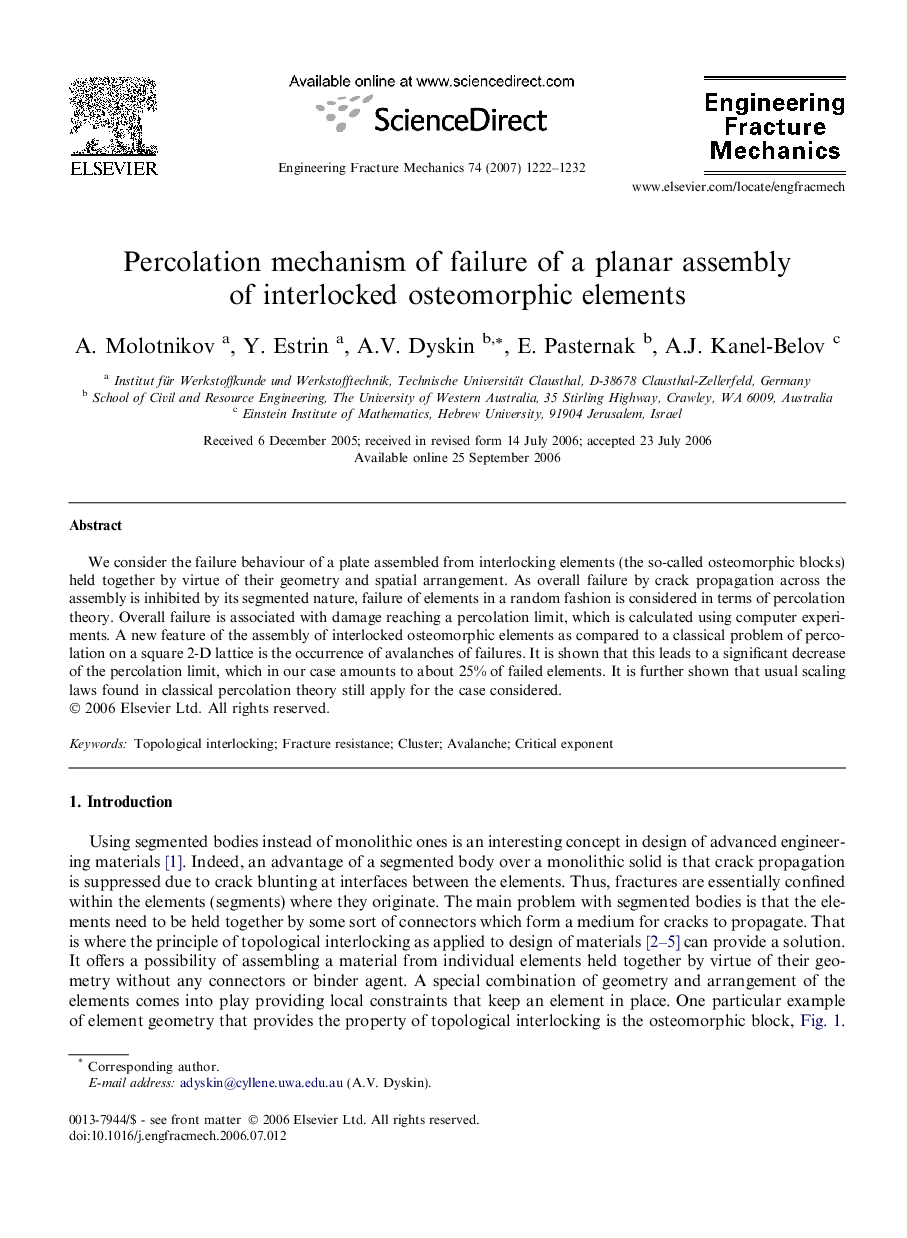| Article ID | Journal | Published Year | Pages | File Type |
|---|---|---|---|---|
| 775781 | Engineering Fracture Mechanics | 2007 | 11 Pages |
We consider the failure behaviour of a plate assembled from interlocking elements (the so-called osteomorphic blocks) held together by virtue of their geometry and spatial arrangement. As overall failure by crack propagation across the assembly is inhibited by its segmented nature, failure of elements in a random fashion is considered in terms of percolation theory. Overall failure is associated with damage reaching a percolation limit, which is calculated using computer experiments. A new feature of the assembly of interlocked osteomorphic elements as compared to a classical problem of percolation on a square 2-D lattice is the occurrence of avalanches of failures. It is shown that this leads to a significant decrease of the percolation limit, which in our case amounts to about 25% of failed elements. It is further shown that usual scaling laws found in classical percolation theory still apply for the case considered.
